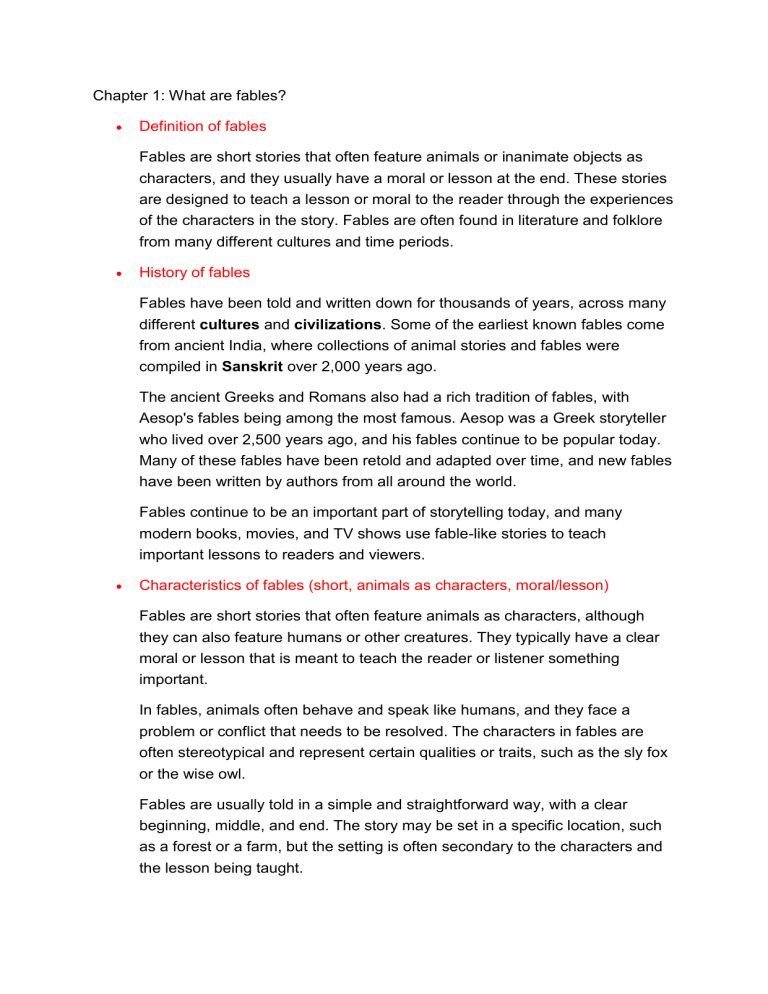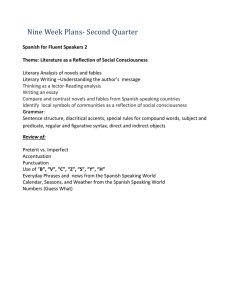
Chapter 1: What are fables? Definition of fables Fables are short stories that often feature animals or inanimate objects as characters, and they usually have a moral or lesson at the end. These stories are designed to teach a lesson or moral to the reader through the experiences of the characters in the story. Fables are often found in literature and folklore from many different cultures and time periods. History of fables Fables have been told and written down for thousands of years, across many different cultures and civilizations. Some of the earliest known fables come from ancient India, where collections of animal stories and fables were compiled in Sanskrit over 2,000 years ago. The ancient Greeks and Romans also had a rich tradition of fables, with Aesop's fables being among the most famous. Aesop was a Greek storyteller who lived over 2,500 years ago, and his fables continue to be popular today. Many of these fables have been retold and adapted over time, and new fables have been written by authors from all around the world. Fables continue to be an important part of storytelling today, and many modern books, movies, and TV shows use fable-like stories to teach important lessons to readers and viewers. Characteristics of fables (short, animals as characters, moral/lesson) Fables are short stories that often feature animals as characters, although they can also feature humans or other creatures. They typically have a clear moral or lesson that is meant to teach the reader or listener something important. In fables, animals often behave and speak like humans, and they face a problem or conflict that needs to be resolved. The characters in fables are often stereotypical and represent certain qualities or traits, such as the sly fox or the wise owl. Fables are usually told in a simple and straightforward way, with a clear beginning, middle, and end. The story may be set in a specific location, such as a forest or a farm, but the setting is often secondary to the characters and the lesson being taught. Overall, fables are a popular form of storytelling because they are entertaining, easy to understand, and offer valuable lessons that can be applied to everyday life.



